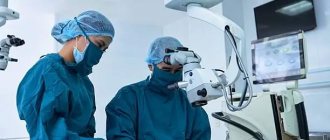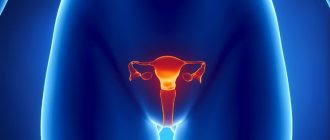When choosing a method of treating endometriosis in women with drugs, the doctor is faced with a difficult task - how to stop the disease without causing harm. The reason for this predicament is that endometriosis is a mysterious disease, many issues of etiology and pathogenesis of which are unclear.
Treatment of endometriosis with drugs
About the disease
Before starting treatment for a disease, it is imperative to know why it develops and how it manifests itself. It is worth mentioning how endometriosis is classified. There are three main types of disease:
- External genital endometriosis;
- Internal genital endometriosis;
- Extragenital.
In the first type, endometrial areas are located in most cases on the following organs:
- The fallopian tubes;
- Cervix;
- Crotch;
- Peritoneum;
- Ovaries.
If we are talking about internal genital endometriosis, then such areas are located deep in the muscular walls of the uterus. There is another name for this disease, namely adenomyosis. The main difference between extragenital endometriosis is the fact that the endometrium grows on other groups of organs (intestines, lungs, navel, and bladder). This type is not very common and occurs only in 7-8% of cases.
Now let's look at the main symptoms of uterine endometriosis. Among them it is worth noting the following:
- Pain in the pelvic area;
- Slight red or brown discharge before or after menstruation;
- There is increased pain in the first days of menstruation;
- Urination is accompanied by pain;
- Dyspareunia (pain during sexual intercourse);
- Prolonged heavy menstrual flow.
In addition, the patient may experience nausea and vomiting. An aggravating factor is the imbalance of sex hormones, as it contributes to the development of a disease such as iron deficiency anemia. Unfortunately, drug correction is not always successful, which leads to anemia.
As the disease develops, due to the proliferation of the affected organs, serious pain attacks occur. They produce specific bloody discharge every month, including from the mammary glands.
The exact causes of the disease have not been identified, but despite this, experts identify the following factors that could contribute to its occurrence:
- Reduced immunity;
- Chronic inflammatory processes in the genital organs;
- Complications after caesarean section;
- Heredity;
- Increased estrogen.
Female sexual anatomy
The process of endometriosis mimics menstruation at certain stages: each month, endometrial cells respond to the monthly cycle as if they were in the uterus. They fill with blood, thicken, rupture and begin to bleed.
However, the products of the process cannot flow through the vagina like menstrual blood. Instead, they develop into blood clots, which later form cysts.
The lesion may recur several times during one cycle. Such formations are not cancerous, but they can develop to the point that they cause obstruction of the tubes or the presence of adhesions that bind together the pelvic organs, causing pain, inflammation, and sometimes even cause infertility.
What treatment methods are there?
In total, there are three main ways to treat this disease:
- Surgery without organ removal;
- Radical surgery;
- Conservative therapy.
The choice of the recommended technique directly depends on the patient’s age, location of the lesion, stage of the disease, as well as the need to restore the reproductive system.
If the patient is a young woman, then in most cases the most gentle treatment regimen is used, namely surgery and hormone therapy. This technique does not inhibit the development of the egg, so the risk of complications is not so great.
However, most patients are more mature (35-40 years old). Treatment of endometriosis in this case is carried out depending on the location of the lesion. The therapy is carried out comprehensively:
- Surgery to remove nodules and cysts, dissect adhesions and burn out lesions;
- Intensive therapy with hormonal drugs;
- A course of immunostimulants.
In most cases, it is not possible to completely cure endometriosis without surgery, and therefore experts recommend a comprehensive type of treatment. However, there are cases when surgery is not recommended and conservative treatment is carried out:
- Infertility;
- Reproductive age of the patient;
- The disease is asymptomatic.
Surgery is performed under the following circumstances:
- The woman has a somatic pathology;
- The presence of other diseases of the genital organs;
- Endometriosis of the scar or navel;
- Medicines do not give the desired effect.
At the same time, cases when urgent radical surgical treatment is required cannot be excluded:
- Severe form of adenomyosis;
- Ovarian endometriosis;
- Previous methods do not lead to recovery.
Only a doctor can announce the necessary treatment regimen; you should not rush and take hormonal medications. In this case, without the advice of a specialist, you can only use homeopathic medicines. Homeopathy is a harmless medicine that can normalize human hormonal function. Despite this, you should approach the choice of such a drug seriously, since they are not universal and will not suit everyone.
Names, release form and composition of Diferelin
Currently, Diferelin is produced in the only dosage form of a lyophilisate for the preparation of a solution
. However, there are three types of the drug, containing different amounts of the active substance and intended for different routes of administration:
In everyday speech, both doctors and patients, for the sake of brevity, call the above varieties of the drug, adding numbers to the word “Diferelin” indicating the content of the active substance.
triptorelin pamoate as an active substance.
.
However, its content in the lyophilisate is indicated in terms of pure triptorelin
. That is, Diferelin 0.1 lyophilisate contains 0.1 mg of pure triptorelin and a slightly larger number of milligrams of triptorelin pamoate. The content of pure triptorelin in the lyophilisate is indicated specifically for the convenience of doctors, since it is the substance in its pure form, after being released from the salt formed with pamoate, that has a direct therapeutic and pharmacological effect. And since the severity of the effect depends on the amount of pure triptorelin, its content is indicated as the dosage in all forms of lyophilisate.
Lyophilisate for subcutaneous injection Diferelin 0.1 contains only mannitol as an excipient. And lyophilisates for intramuscular injections - Diferelin 3.75 and 11.25 contain the following substances as auxiliary components:
Diferelin is produced in cardboard boxes containing bottles with lyophilisate, ampoules with solvent and a syringe with two needles. Saline solution or water for injection is used as a solvent for Diferelin 0.1. And as a solvent for lyophilisates Diferelin 3.75 and 11.25, mannitol or water for injection is used, which are placed in appropriate ampoules.
Lyophilisate Diferelin 0.1
It is colored white and dissolves in the applied solvent, forming a completely transparent solution containing a small amount of suspended particles.
Lyophilisate Diferelin 3.75
colored white or white and cream, and dissolves to form a white or cream opaque suspension.
Lyophilisate Diferelin 11.25
colored yellowish or white, and dissolves to form an opaque suspension, also white or yellowish.
Can endometriosis be cured with medications?
It is not possible to definitively answer this question, since each case of the disease is individual and is treated with different methods. Theoretically, with the help of medications it is possible to cure a patient of this disease, but this does not happen in every case.
Drug treatment of endothermiosis includes:
- Birth control pills (Zhanine, Yarina);
- Medicines that contain progesterone or its substitutes: Visanne, Utrozhestan, Dufastan;
- Danazol;
- Zoladex or other analogues of gonadotropins.
It is worth noting that each of these groups has a different spectrum of action on the patient’s body. Which medications the patient should use, again, should be decided by a qualified doctor.
Contraindications
Gynecologists do not prescribe birth control pills for the following conditions:
- Diseases associated with a high risk of venous thrombosis: congenital thrombophilia, stroke, heart attack, arterial hypertension (BP above 160/100 mm Hg), heart valve pathology, diabetes mellitus with complications, etc.;
- History of thrombosis and thromboembolism;
- Severe liver pathologies;
- Malignant tumors of the mammary glands and reproductive organs (or suspicion of them);
- Pregnancy and lactation;
- Smoking after 35 years of age.
The opinion of gynecologists is clear: contraceptives for fibroids can be prescribed only in the absence of contraindications and in cases where the potential benefit outweighs the possible harm. When using COCs in women over 35 years of age, all risks should be carefully assessed. If there are contraindications or complications develop, other medications are used.
Hormonal drugs for endomatriosis
Hormones in endometriosis are one of the most important aspects. Hormonal drugs help stop the progression of the disease, as well as suppress estrogen secretion and ovulation.
Here is a list of the main groups of drugs for hormonal therapy:
- Antiprogestins;
- GnRH agonists;
- Gestagens and progestogens.
Gonadotropin-releasing hormone agonists
The hypothalamus is responsible for producing natural GnRH agonists to induce the release of pituitary hormones, which in large quantities can neutralize the functioning of the ovaries. Here are the medications that are usually prescribed to patients:
- Diferelin. Used for intramuscular injections for the first 5 days.
- Decaptil Depot. It is administered subcutaneously in doses of 3.75 mg every 28 days.
- Zoladex. Injections into the abdominal area. Over the course of 28 days, the active substance is released.
- Buserelin. It is injected into the muscle in doses of 3.75 every month.
- Lucrine depot. The medication is injected on the 3rd day of menstruation. The injection is repeated every 28 days.
The effects of these drugs correspond to the state of menopause. The endometrium stops developing as estrogens disappear. Pathological areas of the endometrium also do not develop.
This type of treatment takes about 6 months and is quite difficult. From time to time, signs of menopause begin to show themselves. In addition, bones begin to lose their density, which can lead to fractures.
Gonadotropic hormone inhibitors and antigestagens
Inhibitors are also used to treat endometriosis. Such drugs can inhibit the development of endometrial cells. Due to their effects, the ovaries stop working, and therefore the production of estrogen also stops. Some of the side effects of such drugs include:
- Accelerated body hair growth;
- Excessive weight gain;
- Acne.
The most famous drugs in this category:
- Danazol;
- Mifepristone, Gestrinone.
Gestagens
The essence of treatment is to take drugs similar to progesterone. The main function of the substance is to suppress the proliferation of the uterine mucosa. Let's list the main drugs for hormonal therapy based on hormones of this series:
- Duphaston. Supplied in the form of tablets, which should be taken from day 5 to day 25 of the menstrual cycle.
- Visanne for endometriosis. Take 1 whole tablet every day. The drug begins to act after the endometrium stops growing, after which the ovaries stop functioning and menstruation stops.
- Orgametril. It is used to prevent the development of new foci of the disease, and also reduces the size of old ones. You need to take 1 tablet daily from days 14 to 25 of your cycle.
Contraceptives for endometriosis (hormonal oral contraceptives)
The main advantage of hormonal drugs in the treatment of endometriosis is that they can perform several tasks simultaneously. Combined oral contraceptives are usually used to prevent pregnancy. They contain individual estrogens and gestagens. Thanks to them, the body stops producing hormones on its own and the endometrium stops developing.
The most popular birth control pills for endometriosis are:
- Janine;
- Jess;
- Dimia;
- Claira;
- Yarina;
- Diana is 35.
The doctor can consult with the patient about which birth control pills are best for her. Using birth control pills, a woman eliminates menstruation and balances her hormones. In this regard, estrogen no longer affects the development of the endometrium.
Reviews
I suffered from terrible pain, I went to see a gynecologist and was diagnosed with endometriosis. Initially I took Norkolut (progetsagen) and it didn’t help at all, then I put on the Mirena coil for 5 years and forgot about the pain, I calmed down, but as soon as I removed it the problems started getting even worse , a month later uterine bleeding began, then numerous new lesions were discovered, in general one problem, now I hope for surgery.
After laparoscopy, they discovered multiple endometriotic lesions, prescribed me treatment with injections of buserelin (GnRH) for 6 months, I was very afraid of side effects, but surprisingly everything was quiet and calm, after 2 months menstruation disappeared, hair and skin remained the same, there was no depression, on the contrary I became calmer and more confident, after 5 months I had a repeat laparoscopy and did not find a single focus of endometriosis.
For a long time I dreamed of becoming a mother, but everything was unsuccessful, I went to doctors and only after 3 years a good doctor discovered that I had an endometroid cyst. The first drug I started taking was Duphaston, it didn’t help, on the contrary, the cyst got bigger. The doctor suggested taking 6 injections of diferelen (once a month). After the injection, the sensations were terrible - ebbs and flows, a terrible mood, and the cost of the drug was very high, but after 3 months the doctor stopped the course and said that I could get pregnant and after six months everything worked out for me. I don’t know how my drug helped endometriosis, because pregnancy and breastfeeding are the best treatment for her, now I am a mother of two children.
Non-hormonal drugs
Only a specialist can prescribe the correct treatment method to the patient. Despite this, factors such as pain, exhaustion, and frequent discharge force the patient to resort to the use of painkillers. You can highlight a list of basic remedies for relieving the feeling of heaviness and inflammation:
- Ibuprofen;
- Papaverine;
- Novigan.
The following medications can be used to maintain immunity:
- Retinol;
- Tocopherol;
- Cycloferon.
Treatment of endometriosis without hormones is indicated in the following cases:
- The patient is allergic to hormonal medications;
- Tendency to thromboembolism and thrombosis;
- Arterial hypertension;
- Severe pathologies of the kidneys and liver;
- Diabetes;
- Thyrotoxicosis.
In any case, the choice of non-hormonal treatment should be made by a specialist qualified in this field.
Side effects
In the first three months, a woman’s body adapts to the new drug. During this period, the following unpleasant symptoms may appear:
- Nausea;
- Breast engorgement;
- Headache;
- Decreased sexual desire;
- Mood swings.
Within 2-3 months, all these manifestations should go away, and the woman’s body should adapt to the hormonal drug. If undesirable symptoms persist, you should consider changing your contraceptive.
Throughout the course of taking COCs, the following side effects may occur:
- Depression and low mood;
- Migraine;
- Nausea and vomiting;
- Pain in the mammary glands;
- Increased blood pressure;
- Contact lens intolerance;
- Deterioration of varicose veins;
- Intermenstrual bleeding;
- Thrombosis and thromboembolism.
Antibacterial drugs
Antibiotics for endometriosis are taken in the following cases:
- In parallel with the main disease, a fungal infection develops;
- Complications of certain infectious diseases of the genital organs are observed;
- The patient previously had inflammatory pathologies.
In all other cases, antibacterial drugs are not prescribed, since this type of treatment can lead to a large number of complications or side effects. Antibiotics tend to suppress the immune system, which contributes to the further development of endometriosis.
What candles can be used
As you can already see, medications for endometriosis can be different. Another one of them is candles. For endometriosis of the uterus, the following drugs are most often used:
- Diclofenac;
- Indomethacin;
- Anuzol;
- Viferon.
In most cases, such medications are prescribed if the patient wants to achieve the maximum effect of pain relief without taking analgesics in large doses. They are also used for adhesions. The dosage usually depends on the severity of the disease. The method of application is quite simple: suppositories are inserted into the anus, twice a day.










